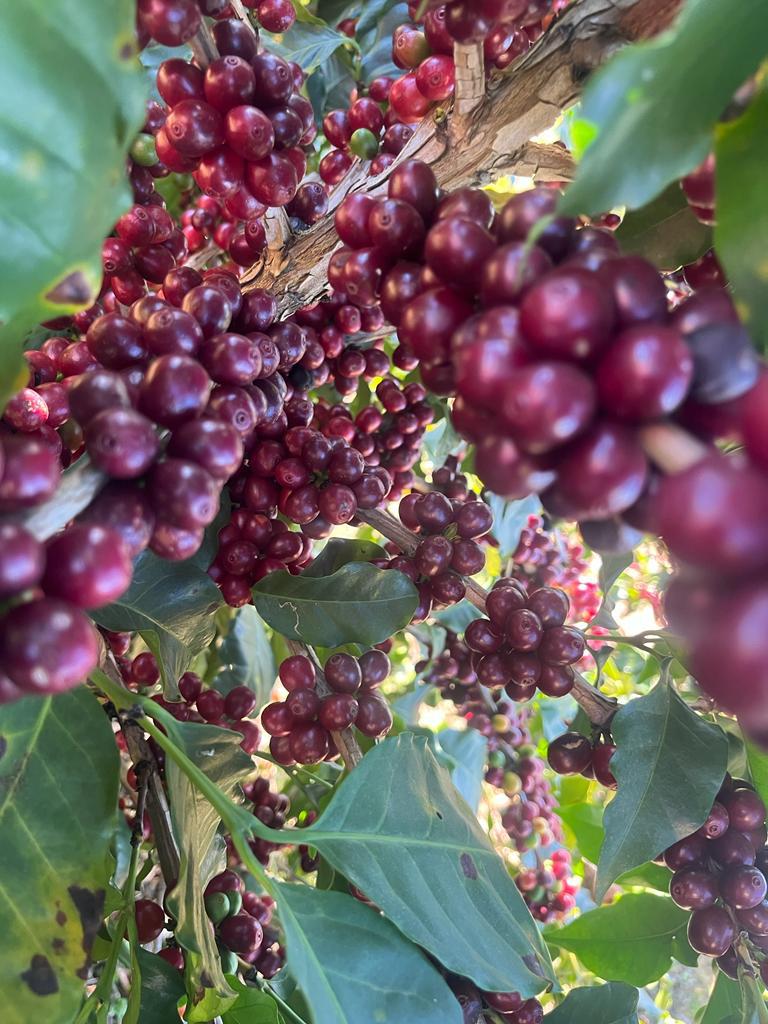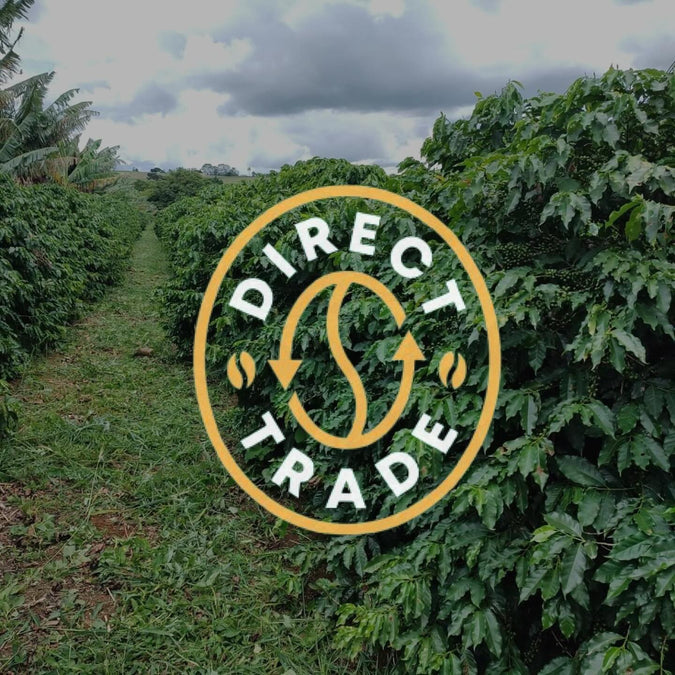For 150 years, Brazil has been the world's largest producer and exporter of coffee. The country has a large and diverse land area with different climates, which makes it possible to grow different coffee varieties.
The most widespread bean type in Brazil is Arabica, and the most important regions for coffee production are in the states of São Paulo, Minas Gerais, Bahia, Paraná and Espírito Santo.
The coffee world has tended to underestimate the flavor profile and quality of Brazilian coffee. Over the years, however, Brazil has made significant changes to change this perception, including by encouraging the production of specialty coffee as well as organic and fair trade coffee. And over the last few decades, specialty coffee has saved many small coffee farms from disappearing. The fluctuations in the international coffee market have affected many small coffee producers around the world, but the small farmers in Brazil have managed to sustain their businesses by producing premium coffee.
Variants from Brazil
The most common varieties of Arabica coffee in Brazil are Bourbon, Catuaí, Icatú Acaiá and Mundo Novo, the latter being the most popular. Among the bean types there are sub-varieties, such as yellow and red bourbon, yellow and red Catuaí, different types of Mundo Novo and others. Catuaí is 100% Brazilian and you can find it in all the coffee regions because it grows well in different agricultural areas and climates.
Research and development
In Brazil, many national universities and institutes work on research and development of coffee. In order to improve quality, yields and resistance to disease and climate change, agronomists, biologists and other researchers study which coffee varieties are best to plant in the various coffee regions - often by breeding hybrids or through natural mutations.

Variants at Acorda
Arara
The coffee variety Arara is a natural cross between Obatã and yellow Catuai. It was discovered in 1988 in the state of Parana in Brazil. The trees are productive and resistant to both drought and leaf rust, which makes the variety attractive from an agronomic perspective. Arara has also gained attention by doing very well in international quality competitions. Scores on the grading scale, which extend into the mid-90s, in addition to the agronomic benefits, mean that more and more farms are planting this variety.
Acorda Spesialkaffe has 50g samples of Arara available (NOK 50). Send us a request if you want to test this variant.
Red Bourbon
The first bourbon seed arrived in Brazil in 1859. The government had heard that the coffee variety grown on the island of Reunion - then called Bourbon - was more productive and of higher quality than the Typica variety grown in Brazil. Therefore, an emissary went to the island in the Indian Ocean and brought seeds home to Brazil. By the 1870s, Rød Bourbon had become a prominent coffee variety in the country. Today, where we also have the variant Yellow Bourbon, the original bourbon is called Red Bourbon.
In the 1930s, various strains of Red Bourbon were bred at the Campinas Agronomic Institute (IAC) in the state of Sao Paulo and distributed to farmers. The aim was to study the performance of a selection of Red Bourbon varieties planted in different regions with different growing conditions.
This helped the researchers understand the effect of environmental variations on coffee varieties.

In 1871, something strange appeared in the city of Botucatu in the state of São Paulo: A mutation of the Typica plant bore yellow berries, something never before seen in Brazil. It was adopted by a number of farmers because of the strange color of the fruit.
Some researchers believe that yellow bourbon originated as a natural red bourbon mutation.
Dr. Carlos Arnaldo Krug was the first to study Bourbon trees with yellow fruit as a separate variety in 1930. Yellow Bourbon's average yield is 32-45% higher than Red Bourbon, but less than other varieties such as Catuai and Mundo Novo. The average height of the trees is over two metres. Due to low/medium yields and sensitivity to coffee leaf rust, growing Yellow Bourbon requires more attention and care than other varieties. Yellow Bourbon has the greatest yield and best quality when it is grown 1000 meters or more above sea level, and in places where the harvesting and post-harvest processes are well done.
The word Catuai, in the Tupi-Guarani language, means "very good." Red Catuai originates from a cross between Yellow Caturra and Mundo Novo varieties. Trees that produced red fruits were selected, and descendants of these plants were vigorous and highly productive, leading to the designation Red Catuai. The cultivar was launched commercially in 1972 and it spread in Brazil and in Central America.
Red Catuai is known to have different taste and sensory characteristics depending on where it is grown and how it is roasted. Red Catuai is a mild to medium-bodied coffee with a round, sweet finish. It can have flavor notes of chocolate, caramel, caramelized sugar, honey, almonds and spices such as nutmeg and sweet grass. At Acorda, it is burned brightly to bring out its best qualities.
Gul Catuai was developed in 1949 by crossing Gul Caturra with Mundo Novo at the Instituto Agronômico de Campinas (IAC) in Brazil. Yellow Catuai has a rich crop. The variety is very popular in Brazil and has been available on the market for the past four decades, making it an international favorite as well. Gul Catuai is a medium-bodied coffee, and has notes of chocolate, caramel, with a smooth, sweet and slightly dry finish. This bean is harvested before the coffee berry is fully ripe (still yellow before it ripens to red), which gives it drier, sharper and lighter tones.
Catucai was developed as a cross between Icatu and Catuai. The first selection was made in 1988 by researchers at the then Brazilian Coffee Institute (IBC). These were planted and tested in various regions to select plants that had high productivity, were robust and resistant to coffee rust and other pests. This breeding program gave rise to cultivars of yellow and red fruit that were called Catucaí, a combination of the words Icatu and Catuaí. Catucai is a well-balanced and flavorful coffee, which makes it a favorite among coffee enthusiasts.
Acorda Special Coffee has 50g samples of Catucai available (NOK 50). Send us a request if you want to test this variant.

The Caturra plant is small in stature, as its name describes; Caturra means small in Guarani. The yellow berries of Caturra may be a mutation of the original red Caturra. It was first found in the Serra do Caparaó, the mountain range that divides the states of Minas Gerais and Espírito Santo. In 1937, seeds from trees with red and yellow fruit were introduced to the Campinas Agronomic Institute (IAC), where they made a selection of the best plants. Caturra was the first mutation discovered that has both a compact tree and high productivity. The coffee growers were interested in Caturra because of its size, because the plants can be placed closer together, and the dense branches allow it to produce more fruit in the same place.
One of the most iconic and best Brazilian coffee varieties, Mundo Novo, came from a natural cross between Sumatra and Red Bourbon strains. The Mundo Novo prayer is named after the former municipality of Mundo Novo in Sao Paulo, now called Urupes. The seeds of this variety were planted in that municipality and distributed to the farms in early 1952. This low acidity coffee bean has high disease resistance and a sweet-toned, rich flavor. It is also suitable for espresso.
Maragogipe
Maragogipe are also known as "elephant coffee beans" due to their size. This is the world's largest coffee bean. It is believed that this coffee is a spontaneous mutation of Typica coffee that occurred in Maragogipe, Bahia in Brazil. This is a coffee bean with a very large size compared to other Arabica beans.
The taste varies depending on the soil it grows in. In poor soil, it will produce a coffee with little taste. Under fertile conditions, however, it develops a richer flavor, usually with sweet notes of fruit and honey.
Maragogipe is a rarity in the coffee world and therefore highly valued by coffee lovers.


